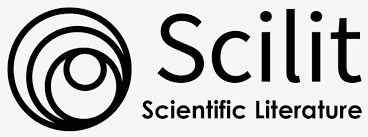Rekomendasi Access Point Network pada Fakultas di Lingkungan UIN Sunan Kalijaga Yogyakarta
DOI:
https://doi.org/10.14421/jiska.2017.22-03Abstract
The wireless network indoors is strongly influenced by the presence of interference. To overcome such interference and to improve the performance of wireless networks, then the optimization is done. There are several kinds of propagation that can interfere with the performance of the wireless network, which includes the number of transmitters (access point), free space loss, Received Signal Stength (RSSI), coverage that can be served, measuring attenuation at the barrier (concrete wall, soft partition, door, and floor).This research is an analysis research where the purpose of this research is to determine the position of good access point at Faculty of Shari'ah and Law Building using bayesian probability method. The first stage of this research is to determine the distance of signal reception to know the strength of the weak signal with manual random sampling so that the data obtained vary. The second stage is to determine the position of the access point with a choice of several points in order to be able to compare the best position based on the floor plan of the Faculty of Shari'ah and Law. The last stage is to calculate probability with Bayesian probability method.Result of this research is the position of the best access point on the 3rd floor that is at position B with probability value 13 while on floor 4 the best access point position at position A with value 10, position D with value 13 and position E with value 13. The most influential propagation in the Faculty of Shari'ah and Law Building is a concrete wall with a large 60% reducing the mass of radiated signals.
References
Aryanto, K. Y. (2014). Jaringan Komputer. Yogyakarta.
Bahry, M. S. (2016). Analisis dan Implementasi IEEE 802.1Q Untuk Meningkatkan Keamanan Jaringan Komputer. Yogyakarta: UIN Sunan Kalijaga.
Hartanti, S., & Iswanti, S. (2008). Sistem Pakar dan Pengembangannya. Yogyakarta: Graha Ilmu.
Junita, R., Sandi, D., Septiawan, V., & Tobing, A. R. (2013). Infrastruktur Jaringan Wi-fi (Wireless Fidality). Semarang.
Kartika, K. P., Santoso, T. B., & Siswandari, N. A. (2010). Optimasi Penataan Sistem Wi-fi di PENS-ITS Dengan Menggunakan Metode Algoritma Genetika. Surabaya.
MADSOMC. (2011). Membangun Sistem Jaringan Wireless Untuk Pemula. Madiun: MADCOMS.
Nugraha, F. S. (2016). Analisis dan Optimalisasi Access point Menggunakan Metode Manual Random Sampling dan Coverage Visualization. Yogyakarta: UIN Sunan Kalijaga.
Nugraha, Y. S. (2015). Investigasi Forensik Jaringan Dari Serangan DDOS Menggunakan Metode Naive Bayes. Yogyakarta: UIN Sunan Kalijaga.
Riza, M. F. (2012). Simulasi Cakupan Area Sinyal WLAN 2.4 GHz Pada Ruangan. Semarang: Universitas Diponegoro.
Ulvi, Q. (2011). Analisis dan Studi Kasus Perencanaan Metropolitan Area Network (MAN) Dengan Menggunakan Teknologi Wimax di Kota Yogyakarta. Yogyakarta: UIN Sunan Kalijaga.
Widyaningsih, B., Nurwarsito, H., & Amron, K. (2014). Optimasi Area Cakupan Jaringan Nirkabel Dalam Ruangan. Malang: Universitas Brawijaya.
Downloads
Published
How to Cite
Issue
Section
License
Authors who publish with this journal agree to the following terms as stated in http://creativecommons.org/licenses/by-nc/4.0
a. Authors retain copyright and grant the journal right of first publication with the work simultaneously licensed under a Creative Commons Attribution License that allows others to share the work with an acknowledgement of the work's authorship and initial publication in this journal.
b. Authors are able to enter into separate, additional contractual arrangements for the non-exclusive distribution of the journal's published version of the work (e.g., post it to an institutional repository or publish it in a book), with an acknowledgement of its initial publication in this journal.
c. Authors are permitted and encouraged to post their work online (e.g., in institutional repositories or on their website) prior to and during the submission process, as it can lead to productive exchanges, as well as earlier and greater citation of published work.









